CRC Press – Nutrition and the Strength Athlete (2001)
Nutrition.and.the.Strength.Athlete.pdf
[1 eBook (PDF)]
Description
Nutrition and the Strength Athlete edited by Catherine G. Ratzin Jackson, CRC Press, 2001Contents1. Basic Principles of Resistance Training …………………………………. 11.1 Introduction ……………………………………………………………………………………….11.2 Basic Principles of Resistance Training ……………………………………………….2 1.2.1 Progressive Overload ………………………………………………………………3 1.2.2 Specificity ………………………………………………………………………………..4 1.2.3 Variation ………………………………………………………………………………….41.3 Acute Program Variables ……………………………………………………………………7 1.3.1 Muscle Action ………………………………………………………………………..10 1.3.2 Load ……………………………………………………………………………………… 11 1.3.3 Volume…………………………………………………………………………………..12 1.3.4 Exercise Selection …………………………………………………………………..14 1.3.5 Exercise Order ……………………………………………………………………….15 1.3.6 Rest Periods …………………………………………………………………………..16 1.3.7 Frequency ………………………………………………………………………………17 1.3.8 Repetition Speed ……………………………………………………………………191.4 Summary ………………………………………………………………………………………….21References ………………………………………………………………………………….. 212. General Nutritional Considerations for Strength Athletes ……….. 31 2.1 Introduction ……………………………………………………………………………………..322.2 metabolic Demands of Resistance Training ………………………………………332.3 Protein………………………………………………………………………………………………35 2.3.1 Types of Protein……………………………………………………………………..36 2.3.2 Protein Requirements for Strength Athletes …………………………..37 2.3.3 Practical Guidelines ……………………………………………………………….382.4 Carbohydrate……………………………………………………………………………………38 2.4.1 Types of Carbohydrate …………………………………………………………..38 2.4.2 Glycemic Index (GI)……………………………………………………………….38 2.4.3 Carbohydrates Before and During Resistance Exercise ………….39 2.4.4 Carbohydrates After Resistance Exercise ……………………………….41 2.4.4.1 Glycogen Resynthesis……………………………………………….41 2.4.4.2 Hormonal Responses………………………………………………..42 2.4.5 Practical Guidelines ……………………………………………………………….432.5 Fat …………………………………………………………………………………………………….44 2.5.1 Types of Fat ……………………………………………………………………………44 2.5.2 Role of Fat for Strength Athletes…………………………………………….45 2.5.3 Practical Guidelines ……………………………………………………………….462.6 Other Nutritional Concerns………………………………………………………………47 2.6.1 Weight Gain/Weight Loss ……………………………………………………..47 2.6.2 Dietary Supplements ……………………………………………………………..472.7 Summary ………………………………………………………………………………………….48References ………………………………………………………………………………….. 483. Energy-Yielding Nutrients for the Resistive-Trained Athlete ………………. 533.1 Introduction ……………………………………………………………………………………..533.2 metabolic Profile of a Resistive Training Bout…………………………………..54 3.2.1 Reliance on Carbohydrates…………………………………………………….55 3.2.2 Reliance on Fats……………………………………………………………………..56 3.2.3 Reliance on Proteins……………………………………………………………….573.3 The Role of Carbohydrates for Resistive-Type Athletes…………………….57 3.3.1 Carbohydrate Supplementation and Exercise Performance……58 3.3.2 Carbohydrate Restriction and Exercise Performance ……………..59 3.3.3 Carbohydrate Requirements of Resistive-Trained Populations ……………………………………………………………………………60 3.3.4 Optimizing Glycogen Recovery after Exercise ……………………….603.4 The Role of Protein for Resistive-Type Athletes ………………………………..62 3.4.1 Protein Supplementation and Exercise Performance ……………..62 3.4.1.1 Amino Acid Supplementation and Muscle Function ……………………………………………………….63 3.4.1.2 Amino Acid Supplementation and Growth Hormone Levels ……………………………………………………….64 3.4.2 Protein Requirements of Resistive-Trained Populations…………643.5 Recommendations…………………………………………………………………………….66References ………………………………………………………………………………….. 674. Vitamin and Mineral Considerations for Strength Training…….. 734.1 Energy metabolism…………………………………………………………………………..744.2 Introduction to Vitamins and Minerals …………………………………………….75 4.2.1 General…………………………………………………………………………………..75 4.2.2 Vitamin and Mineral Supplement Industry……………………………75 4.2.3 Weight Gain and Weight Loss Practices …………………………………77 4.2.4 Dieting Risks and Vitamin and Mineral Deficiencies in Strength-Trained Females ………………………………………………………78 4.2.5 Supplement Use …………………………………………………………………….78 4.2.6 Information Sources for Strength-Trained Athletes ………………..79 4.2.7 Reasons for Supplement Use………………………………………………….794.3 Vitamins……………………………………………………………………………………………79 4.3.1 Introduction …………………………………………………………………………..79 4.3.2 Fat-Soluble Vitamins………………………………………………………………80 4.3.2.1 Vitamin A …………………………………………………………………80 4.3.2.2 Vitamin D …………………………………………………………………83 4.3.2.3 Vitamin E………………………………………………………………….83 4.3.2.4 Vitamin K …………………………………………………………………84 4.3.2.5 General Statements about Fat-Soluble Vitamins ……….84 4.3.3 Water-Soluble Vitamins………………………………………………………….84 4.3.3.1 Vitamin C …………………………………………………………………85 4.3.3.2 Vitamin B1 — Thiamin………………………………………………86 4.3.3.3 Vitamin B6…………………………………………………………………86 4.3.3.4 Vitamin B12 ……………………………………………………………….86 4.3.3.5 Folic Acid (Folate) …………………………………………………….87 4.3.3.6 Antioxidants …………………………………………………………….87 4.3.3.7 General Statements about Water-Soluble Vitamins……874.4 Minerals……………………………………………………………………………………………88 4.4.1 Calcium………………………………………………………………………………….88 4.4.2 Magnesium ……………………………………………………………………………904.5 Dietary Supplement Definition and Concerns ………………………………….904.6 Summary and Recommendations …………………………………………………….91References ………………………………………………………………………………….. 915. Trace Minerals…………………………………………………………………….. 975.1 Introduction ……………………………………………………………………………………..975.2 Iron …………………………………………………………………………………………………..98 5.2.1 Nutritional Iron Status …………………………………………………………..98 5.2.2 Responses to Exercise and Training ……………………………………..100 5.2.3 Resistance Training Studies ………………………………………………….101 5.2.4 Resistance Exercise and Iron Status………………………………………1045.3 Zinc…………………………………………………………………………………………………105 5.3.1 Nutritional Zinc Status…………………………………………………………106 5.3.2 Responses to Exercise and Training ……………………………………..107 5.3.3 Zinc Depletion and Supplementation…………………………………..1075.4 Copper ……………………………………………………………………………………………108 5.4.1 Nutritional Intake ………………………………………………………………..108 5.4.2 Biochemical Status and Exercise Responses …………………………1095.5 Chromium ………………………………………………………………………………………109 5.5.1 Chromium Intake…………………………………………………………………109 5.5.2 Chromium Supplementation and Resistance Training ………… 1105.6 Other Trace Minerals ……………………………………………………………………… 111 5.6.1 Boron…………………………………………………………………………………… 112 5.6.2 Vanadium ……………………………………………………………………………. 1125.7 Summary ……………………………………………………………………………………….. 113References ………………………………………………………………………………… 1136. Dietary Supplements and Strength-Trained Athletes …………. 1196.1 Introduction ……………………………………………………………………………………1206.2 Anabolic Agents ……………………………………………………………………………..120 6.2.1 Amino Acid Supplements…………………………………………………….120 6.2.1.1 Arginine…………………………………………………………………121 6.2.1.2 Glutamine………………………………………………………………121 6.2.1.3 Ornithine ……………………………………………………………….122 6.2.1.4 Ornithine Alpha Ketoglutarate ………………………………122 6.2.2 Combinations of Amino Acids — Evaluation of Synergistic Effects ………………………………………………………………..122 6.2.3 Gamma Hydroxybutyric Acid (GHB)…………………………………..1226.3 Anabolic Agents — Herbs and Plant-Based Substances ………………….123 6.3.1 Gamma Oryzanol…………………………………………………………………123 6.3.2 Tribulus terrestris …………………………………………………………………..123 6.3.3 Yohimbine ……………………………………………………………………………123 6.3.4 Beta-Hydroxy-Beta-Methylbutyrate (HMB) …………………………1246.4 Anabolic Agents — Minerals ………………………………………………………….125 6.4.1 Vanadium …………………………………………………………………………….125 6.4.2 Boron……………………………………………………………………………………1256.5 Energy Delivery Enhancers — Inosine ……………………………………………1266.6 Thermogenic Agents……………………………………………………………………….126 6.6.1 Ephedrine …………………………………………………………………………….126 6.6.2 Caffeine………………………………………………………………………………..1276.7 Summary ………………………………………………………………………………………..127References ………………………………………………………………………………… 1287. Overview of Anabolic/Androgenic Hormones and Strength ……….. 1337.1 Anabolic/Androgenic Hormones and Strength………………………………134 7.1.1 Introduction …………………………………………………………………………1347.2 Testosterone — The Principal Androgen…………………………………………135 7.2.1 General Concepts …………………………………………………………………135 7.2.2 Synthesis and Regulation……………………………………………………..135 7.2.3 metabolism and Transport……………………………………………………136 7.2.4 Mechanism of Androgen Action…………………………………………..137 7.2.5 Testosterone Replacement Therapy (TRT)…………………………….1387.3 AnabolicAndrogenic Steroids ……………………………………………………….139 7.3.1 General Concepts …………………………………………………………………139 7.3.2 Types of AnabolicAndrogenic Steroids……………………………….140 7.3.3 Effects of AnabolicAndrogenic Steroids on Strength and Muscle Mass………………………………………………………………….141 7.3.4 Adverse Effects and Risks of AnabolicAndrogenic Steroids ………………………………………………………………………………..143 7.3.4.1 Reproductive System Effects …………………………………..143 7.3.4.2 Cardiovascular System Risk ……………………………………143 7.3.4.3 Human Liver Risk…………………………………………………..144 7.3.4.4 Psychological Status Effects…………………………………….1447.4 Growth Hormone……………………………………………………………………………145 7.4.1 General Concepts …………………………………………………………………145 7.4.2 Exercise and GH…………………………………………………………………..146 7.4.3 GH Use ………………………………………………………………………………..146 7.4.4 GH Effects in Normal, Healthy Adults…………………………………147 7.4.5 GH Replacement Therapy: Aging and Growth Hormone Deficiency (GHD)…………………………………………………………………148 7.4.6 Adverse Effects and Risks of GH Use …………………………………..148 7.4.7 Conclusions Regarding GH Use …………………………………………..1497.5 The Insulin-Like Growth Factor System………………………………………….149 7.5.1 General Concepts …………………………………………………………………149 7.5.2 Anabolic Effects of IGF-1 ……………………………………………………..150 7.5.3 Recombinant Human IGF-1 Replacement Therapy…………………………………………………………..1507.6 Prohormones: DHEA and Androstenedione. ………………………………….1517.7 Summary ………………………………………………………………………………………..153References ………………………………………………………………………………… 1538. Creatine Supplementation and the Strength Athlete ………….. 1578.1 Introduction ……………………………………………………………………………………1578.2 Creatine Background ………………………………………………………………………158 8.2.1 Sources…………………………………………………………………………………158 8.2.2 metabolism…………………………………………………………………………..158 8.2.3 Function……………………………………………………………………………….1598.3 Short-Term (One-Week) Supplementation …………………………………….164 8.4.1 Muscle Creatine……………………………………………………………………164 8.4.2 Body Composition and Strength Performance……………………..165 8.4.3 Mechanisms …………………………………………………………………………1688.5 Side Effects ……………………………………………………………………………………..1698.6 Summary ………………………………………………………………………………………..170References ………………………………………………………………………………… 1719. Supporting the Immune System: Nutritional Considerations for the Strength Athlete ……… 1759.1 Introduction ……………………………………………………………………………………1769.2 Immune Response to Resistance Conditioning ……………………………….176 9.2.1 Role of the Immune System………………………………………………….176 9.2.2 Studies Linking Immune Function and Physical Activity …….177 9.2.3 Studies of the Immune Response to Resistance Exercise ………1779.3 Nutrition for the Immune System …………………………………………………..178 9.3.1 General Considerations………………………………………………………..178 9.3.2 Macronutrients …………………………………………………………………….179 9.3.2.1 Carbohydrate………………………………………………………….179 9.3.2.2 Lipids ……………………………………………………………………..179 9.3.2.3 Protein…………………………………………………………………….180 9.3.2.4 Energy Intake Restriction of Macronutrients…………..180 9.3.3 Micronutrients ……………………………………………………………………..181 9.3.3.1 Coenzyme Q10 …………………………………………………………181 9.3.3.2 Minerals………………………………………………………………….181 9.3.3.3 Vitamins………………………………………………………………….182 9.3.3.4 Summary of the Micronutrient Effects on Immunity …………………………………………………………..1859.4 Immune Response to Common Nutritional Ergogenic Aids……………1859.5 Immune Response to Conditioning with Dietary Intervention ……….1869.6 Summary and Conclusions……………………………………………………………..188References ………………………………………………………………………………… 18810. Hydration and the Strength Athlete …………………………………… 19710.1 Introduction ………………………………………………………………………………..19710.2 Water …………………………………………………………………………………………..19810.3 Body Hydration Terminology ……………………………………………………..19910.4 Water Balance………………………………………………………………………………19910.5 Plasma Volume Shifts ………………………………………………………………….200 10.5.1 Plasma Volume Shifts and Endurance Exercise………………200 10.5.2 Plasma Volume Shifts, Hydrostatic Pressure, and Strength Training……………………………………………………………20110.6 Measures of Muscular Strength and Endurance ………………………….20110.7 Supplements and Hydration ……………………………………………………….203 10.7.1 Protein and Fluid Balance………………………………………………203 10.7.2 Amino Acid Supplements and Fluid Balance…………………204 10.7.3 Creatine Monohydrate …………………………………………………..20410.8 Maintaining Fluid Balance …………………………………………………………..20510.9 Indices of Hydration ……………………………………………………………………20710.10 Summary …………………………………………………………………………………….208References ………………………………………………………………………………… 20911. Nutritional Concerns of Women Who Resistance Train ………. 21511.1 Women and Physical Activity………………………………………………………..21611.2 Resistance Training for Women ……………………………………………………..216 11.2.1 Types of Resistance Training………………………………………………216 11.2.2 Adaptations to Resistance Training ……………………………………218 11.2.2.1 Exercise Performance Adaptations to Resistance Training……………………………………………………………….219 11.2.2.2 Muscular and Bone Adaptations to Resistance Training……………………………………………………………….219 11.2.2.3 Body Weight and Composition Adaptations to Resistance Training ……………………………………………..219 11.2.2.4 Serum Lipid Adaptations to Resistance Training……………………………………………………………….220 11.2.2.5 Neuroendocrine Adaptations to Resistance Training……………………………………………………………….22011.3 Nutritional Needs of Resistance Training for Women ……………………221 11.3.1 Proper Nutrition During Training………………………………………221 11.3.1.1 Carbohydrate Utilization and Intake …………………..222 11.3.1.2 Protein Utilization and Intake……………………………..223 11.3.1.3 Problems Associated with Excess Protein Consumption ………………………………………………………226 11.3.1.4 Vitamins and Minerals ………………………………………..227 11.3.2 Nutritional Needs of Resistance Exercise for Women…………22711.4 Summary……………………………………………………………………………………….229Acknowledgment……………………………………………………………………………………230References ………………………………………………………………………………… 23012. Nutritional Concerns of Strength Athletes with an Emphasis on Tennis………… 23512.1 Introduction…………………………………………………………………………………..236 12.1.1 Energy Systems………………………………………………………………….237 12.1.2 General Requirements for Tennis……………………………………….23812.2 Calculation of Energy Costs…………………………………………………………..23812.3 Training and Competition Diet………………………………………………………239 12.3.1 Carbohydrate …………………………………………………………………….239 12.3.1.1 Description of Types ……………………………………………239 12.3.1.2 Carbohydrate Measurement in Tennis…………………239 12.3.1.3 Recommendations ………………………………………………240 12.3.2 Fat ……………………………………………………………………………………..240 12.3.2.1 Description of Types ……………………………………………240 12.3.2.2 Fat Measurement in Tennis………………………………….241 12.3.2.3 Recommendations ………………………………………………241 12.3.3 Protein ……………………………………………………………………………….242 12.3.3.1 Description of Types ……………………………………………242 12.3.3.2 Protein Measurement in Tennis …………………………..242 12.3.3.3 Recommendations ………………………………………………24212.4 Training and Competition Nutrition ……………………………………………..243 12.4.1 Pre-Match Nutrition…………………………………………………………..243 12.4.2 Nutrition and Hydration During Match Play …………………….244 12.4.3 Post-Match Nutrition …………………………………………………………24712.5 Vitamins, Minerals, and Supplements……………………………………………24712.6 Travel …………………………………………………………………………………………….24912.7 Summary……………………………………………………………………………………….250References ………………………………………………………………………………… 250Appendix A ……………………………………………………………………………… 255Current Comment from ACSM: Youth Strength TrainingAppendix B………………………………………………………………………………. 259ACSM Position Stand: Cardiorespiratory and Muscular Fitness and FlexibilityAppendix C ……………………………………………………………………………… 265ACSM Position Stand: Exercise and Physical Activity for Older AdultsAppendix D ……………………………………………………………………………… 271ACSM Position Stand: Osteoporosis and ExerciseAppendix E ………………………………………………………………………………. 273ACSM Position Stand: Proper and Improper Weight Loss ProgramsAppendix F ………………………………………………………………………………. 275Selected Web SitesAppendix G ……………………………………………………………………………… 277List of NutrientsAppendix H ……………………………………………………………………………… 279Current Comment from ACSM: Vitamin and Mineral Supplements and ExerciseAppendix I……………………………………………………………………………….. 285ACSM Position Stand: The Use of Anabolic/Androgenic Steroids in SportsAppendix J……………………………………………………………………………….. 287Current Comment from ACSM: Anabolic SteroidsAppendix K ……………………………………………………………………………… 291ACSM Position Stand: Exercise and Fluid ReplacementIndex ……………………………………………………………………………………….. 295
You must be logged in to post a review.

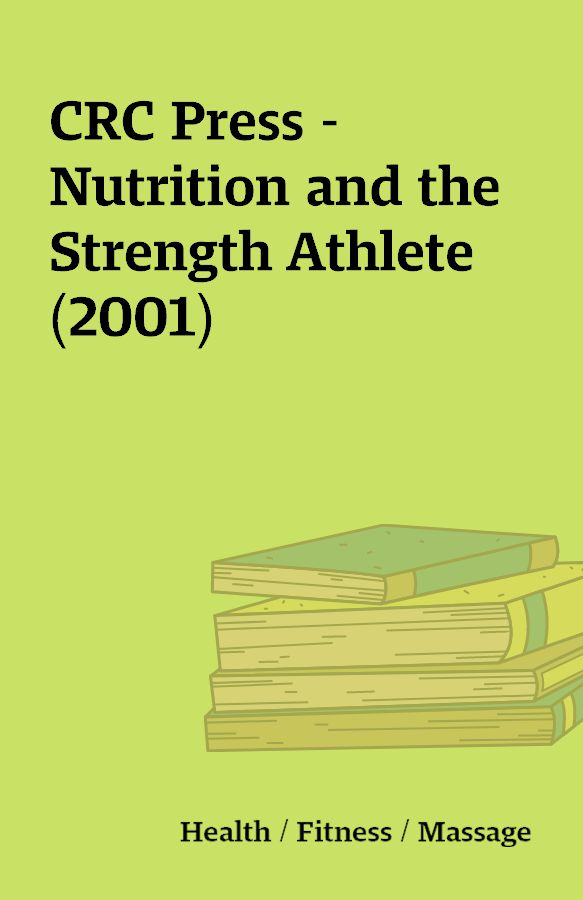
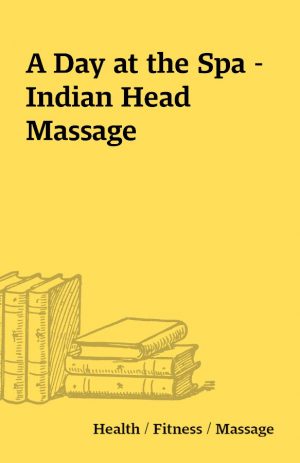
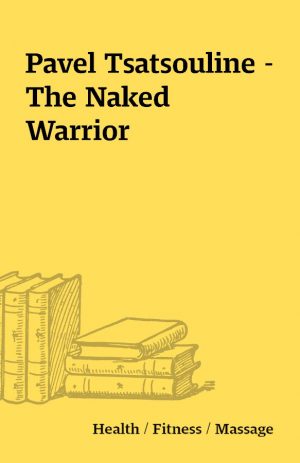
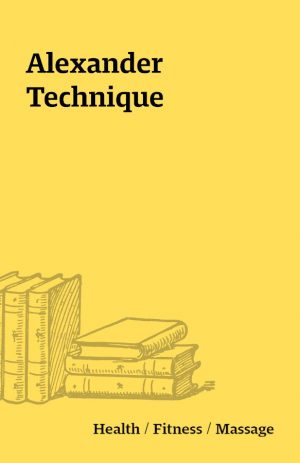
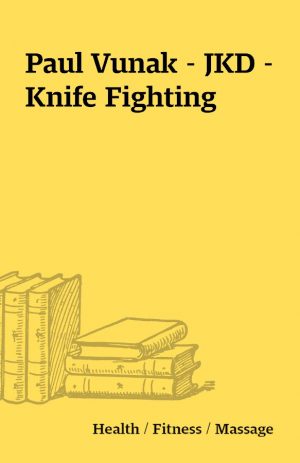
Reviews
There are no reviews yet.